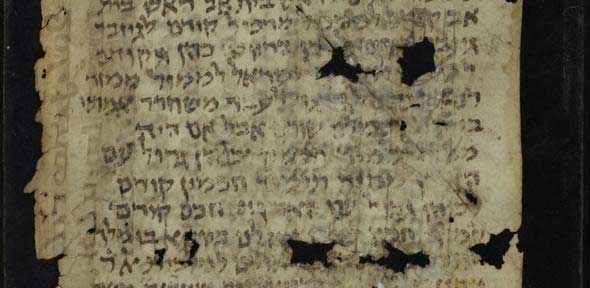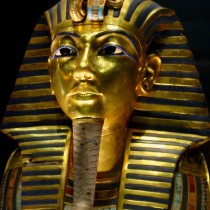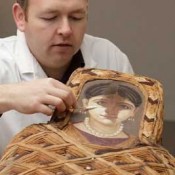The ‘Lewis-Gibson Genizah Collection’ of Hebrew and Arabic manuscripts from the Cairo Genizah dates from the 9th–19th century and is an invaluable 1,000-year record of the religious, social, economic and cultural life of the Mediterranean world.
Treasures include the earliest known example of a Jewish engagement deed (dating from 1119), an eyewitness account of Crusader atrocities, and autograph writings by leading Jewish thinkers such as Moses Maimonides.
A genizah is a sacred storeroom, a room set aside inside a synagogue for the interment of old religious writings, which, because they contain names of God or use the sacred Hebrew alphabet, cannot be discarded. For more than 1,000 years, the Jewish community of Fustat (now a suburb of Cairo), deposited all manner of writings – not just sacred texts – into the dusty storeroom of the Ben Ezra Synagogue. Its contents were described by historian Simon Schama as ‘the single most complete archive of a society anywhere in the whole medieval world’.
The fragments purchased by Oxford and Cambridge were brought back from Cairo by intrepid twin sisters Agnes Smith Lewis and Margaret Dunlop Gibson in 1896 and deposited at Westminster College where they remained until August 1.
The appeal, launched earlier this year at The British Academy, marked the first time the two universities have joined forces to fundraise. A lead gift of £500,000 from the Polonsky Foundation was followed by a donation of £350,000, arranged through a Director of the Littman Library of Jewish Civilisation.
A further generous grant of £100,000 was pledged by the Bonita Charitable Trust – both libraries are grateful to the many other individuals and charitable trusts who made donations to the appeal from around the world.
With the manuscripts secured, the collection, previously owned by the United Reform Church’s Westminster College, will undergo careful conservation at Cambridge University Library during the next two years before being digitised and made freely available online.
The manuscripts will then be divided between the University Library at Cambridge and the Bodleian Libraries at Oxford. A public exhibition looking at the collection – and the extraordinary twin sisters who played such a vital role in their discovery – will be held in 2016 at Cambridge University Library.
Both libraries are already holders of substantial Genizah collections in their own right. Cambridge is home to the largest collection in the world with some 200,000 fragments out of the estimated 350,000 to be found in public collections worldwide. Meanwhile, the Bodleian holds 25,000 world-class Genizah folios, the size and quality of which rank it among the most important global collections.
Cambridge University Librarian Anne Jarvis said: “Over the centuries the Bodleian and Cambridge University Library have been celebrated rivals, particularly when it came to the acquisition of great collections. Now that our two great libraries will share the ownership of the Collection, this can only bring benefits to both institutions and provide an exemplar for other purchases and collaborations in the future.”
Bodley’s Interim Librarian Richard Ovenden said: “The Lewis-Gibson Collection has been a catalyst for bringing our two organisations into closer cooperation than ever before. As we face ever harder challenges brought about by complex factors: financial, technological, organizational, the university libraries at Oxford and Cambridge can testify already to the power of collaboration to enable us to face those challenges.”




